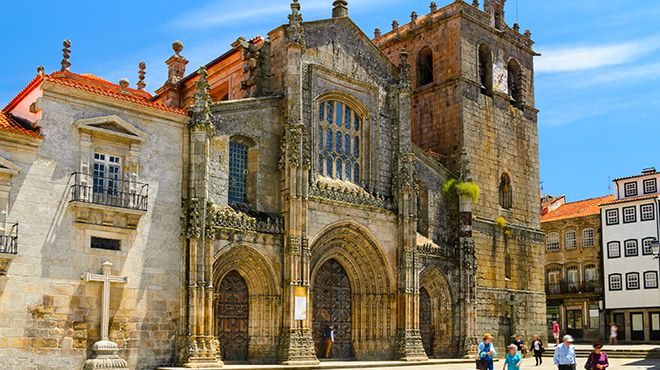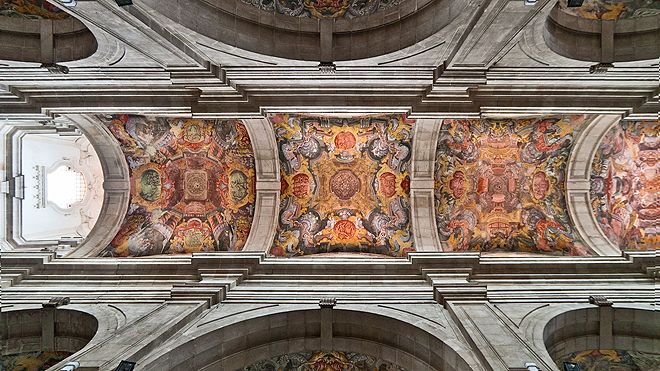Sé Catedral de Lamego

Monuments
Where Marian Devotion was established in 1175.
The facade and the interior of Lamego Cathedral integrate architectural styles spanning various eras, giving both a sense of beauty and monumentality.
The first reference to the bishopric of Lamego dates from 572, when Bishop Sardinário attended the Second Council of Braga, but the diocese was only restored after the defeat of the Arab invaders, following resurgence in the 12th century. Construction on the building, that still exists today, began in 1159 on an old chapel dedicated to San Sebastian, erected a few decades earlier. In 1175 it was consecrated and dedicated to Saint Mary and Saint Sebastian.
Of the original Romanesque architecture only the monumental tower flanking the main facade on the south side remains. During the Late Middle Ages the building was enriched with numerous elements, among them a number of Burial Chapels, mainly of members of the episcopate. The tomb of the founding bishop lies in the chapel of St. Nicholas.
At the start of the 15th century, the cathedral underwent an important renovation, the most visible result of which was the remarkable frontispiece, laid out in a triple portico, which is the main piece of Manueline work in this part of the country. In the Modern Age it was enlarged and enriched with other works, notably a cloister (from the Mannerist period) and a new main chapel (Baroque, quite deep and comprising of a main altarpiece, galleries and two organs). The transept is also baroque and was built immediately after completion of the chancel.
Among the various buildings that extend north of the main facade is the ancient Bishops’ Palace, a baroque building that, since 1917, has been occupied by the Lamego Museum, where some of the best works of religious art in the city remain along with the panels that the well-known (16th century) Portuguese painter Grão Vasco painted for the main chapel of Lamego Cathedral.
5100-132 Lamego
8.00 a.m. - 1 p.m. / 3 p.m. - 7 p.m.









 Explore
Explore 
 Remember and Share
Remember and Share 


